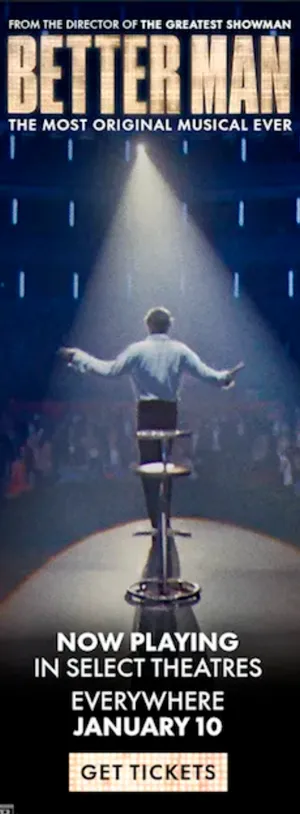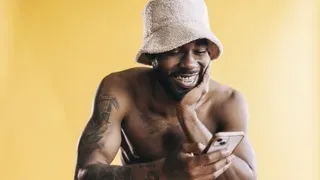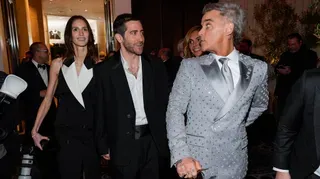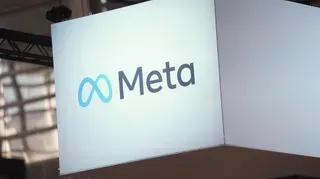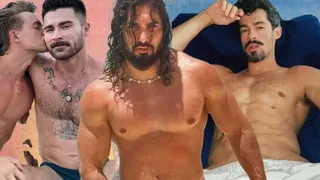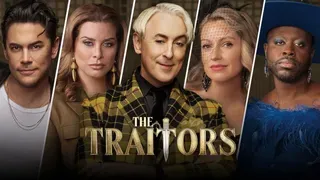December 21, 2014
A History of LGBT Holiday Traditions
Kilian Melloy READ TIME: 5 MIN.
When you think of holidays associated with our community, you probably think of Halloween, or perhaps Pride Day or the Folsom Street Fair. It's unlikely that Christmas is the first that springs to mind, but perhaps it should. Many bars like Aunt Charlie's and Twin Peaks have seasonal decorations and the tradition has even been handed down from Marlena's to Brass Tacks where Marlena's Santas reside for the holiday season. These traditions have roots which go as far back as the 1960s and even to the 1950s.
In 1955, their first year, the Mattachine Society offered a special Christmas issue of The Mattachine Review which was available to subscribers to the magazine but did not appear on newsstands. The attitude of the time shows through on the cover though, as along with the banner wishing the reader "Seasons Greetings" is an article entitled "Sex Offenders Work to Help Themselves."
The Mattachine Review continued to offer holiday covers through the fifties and by 1961 the December issue featured a short story entitled "Tomorrow Begins At Midnight," in which lonely neighbors Paul Larson and Steven Henderson overcome their shyness on their first Christmas eve in New York and go on a date - although given the era, it shouldn't surprise you that this date entails going to church together. At the end of the story Steven has invited Paul over to his apartment for drinks, so at least we can hope for the best.
The holiday season had become much more festive in San Francisco by 1965. The Society for Individual Rights (which used the assertive acronym SIR) formed in 1964 and had their first Christmas party on December 18, 1965. SIR had their own monthly magazine entitled Vector. In the January 1966 issue they report that their first Christmas party had more than 200 attendees, a visit from Santa and lasted from 9pm to 3am.
Vector also featured Christmas ads, so we know that the business community was on board by 1965. There is a rather festive young Santa in polka-dot shorts featured in an ad for The Casual Man, a shop on Polk Street at Broadway.
On April 17, 1966, SIR opened the first gay and lesbian community center in the United States on the second floor of 83 6th Street. The building had a kitchen as well as a community room that could handle 500 people, so they were certainly ready to party by December.
Aside from being an advocacy organization, SIR also functioned as a social organization. The December 1966 calendar indicates that aside from holiday activities, there was square dancing, a stamp collecting club, a card and game night, a conversation group and held a dance every Saturday night.
Amazingly, for their first year in this community center, the holiday activities included a Daughters of Bilitis cocktail party, the Recon Motorcycle Club's annual children's toy benefit, a Christmas decorating party, a Christmas boutique and Christmas dinner. The Vector article on the Christmas season at the SIR Center indicates that there was dancing at the tree-trimming party ("bring a fancy ball to hang on the tree") and that members could bring a guest to the Christmas party which featured "Quite Festive Punch."
The article also mentions that since Christmas was on a Saturday, if you couldn't make it to the Christmas party you should stop by afterward because the regular Saturday evening dance would be taking place. By 1967 they were offering a package wrapping service at the center as well.
The spirit of giving in this season was already in evidence by 1966, given that they were having toy benefits at the SIR Center. A few years later in the December 1969 Vector there is an article which gives a little history of the "Christmas Toy Thing" (as the toy drive was then called).
The event was sponsored by bay area motorcycle and buddy clubs and began in 1964 at a bar (unnamed in the article) that offered a free drink for a toy. By 1967, the event was so successful that the event moved to California Hall. In 1968, when more than 700 people attended, it was held at the Maritime Hall and featured rock bands ("The Marvin Gardens, Phoenix and San Paku") and a light show, and "provided a gala opening to the Christmas season." The toys collected were donated to San Francisco General Hospital and the Hanna Boys Center among other organizations.
One thing that has been lost in the haze of time is that the CMC Carnival was the kickoff to the holiday season in the sixties. CMC stood for the California Motor Club, but it is often referred to as the California Motorcycle Club -- the mistake was even made in the Vector in 1969 when discussing the carnival.
The carnival took place on the second Sunday of November (the first was on November 13, 1966) at the Seafarer's International Union Hall at 350 Fremont Street. It is often remembered today as the predecessor to the Folsom Street Fair, but it definitely was a holiday event. In a 1969 article entitled "CMC Carnival Success," Vector reported that thousands crowded to the fair and that "various clubs, organizations and businesses offered all manner of entertainment, prizes and wares at the Gay Trade Fair."
At one booth, Miss Myra Breckenridge's "aides Sexuelles" was for sale and was "at least twenty inches long." The CMC South booth offered aluminum inhalers "with the purchaser's name engraved thereon."
By 1970, Vector was referring to the event as the "biggest carnival in gaydom." You can easily see that from events such as this, the "Christmas Toy Thing" and the various motorcycle club parties (like the Recon Motorcycle Club's toy benefit at the SIR community center) that these clubs played a big role in the gay community at large and contributed much to the holiday spirit.
By 1972 Christmas events in the Bay Area had taken a decidedly political turn. The Gay Alliance and the Bay Area Reporter's co-editor Paul Bentley organized a "Caravan to Vacaville" which went to Vacaville Prison to donate gifts to the prisoners and to demand that psychological "cures" for homosexuality and psychosurgery at Vacaville and Atascadero prisons be stopped.
The protestors wanted to stage a show for the prisoners as well, but this was refused, so they instead put on a community show at Fort Miley V. A. Hospital for veterans of the Vietnam War. Entertainers who were performing included Pat Montclaire and Jackie Phillips from Finocchio's. After the show, gifts were distributed to the veterans on the ward. Donations were sponsored by clubs and businesses in San Francisco (among them the Gangway, which is still in business today). That show was apparently a grand success as the "Fort Miley Xmas Variety Show" was performed again for several subsequent years.
Perhaps it should come as no big surprise that the holiday traditions of the LGBT community have deep roots. After all, the "Home For The Holidays" concert by the San Francisco Gay Men's Chorus is in its twenty-fifth year, and the chorus itself goes back to 1978.
We have a tendency to take special notice of events in our community when we fought back, so events like Stonewall and the riot at Compton's Cafe take precedence in our memories. But at this time of year, when we celebrate our community and our family of friends, it's worth remembering that many of our social traditions go back even further, with the SIR Christmas parties predating both events.
It's worth remembering that we are not only defined by our battles, but by those we love. It's a good time of year to reach out to our special friends and chosen family, something we have been doing in our community for a very long time.
Kilian Melloy serves as EDGE Media Network's Associate Arts Editor and Staff Contributor. His professional memberships include the National Lesbian & Gay Journalists Association, the Boston Online Film Critics Association, The Gay and Lesbian Entertainment Critics Association, and the Boston Theater Critics Association's Elliot Norton Awards Committee.
